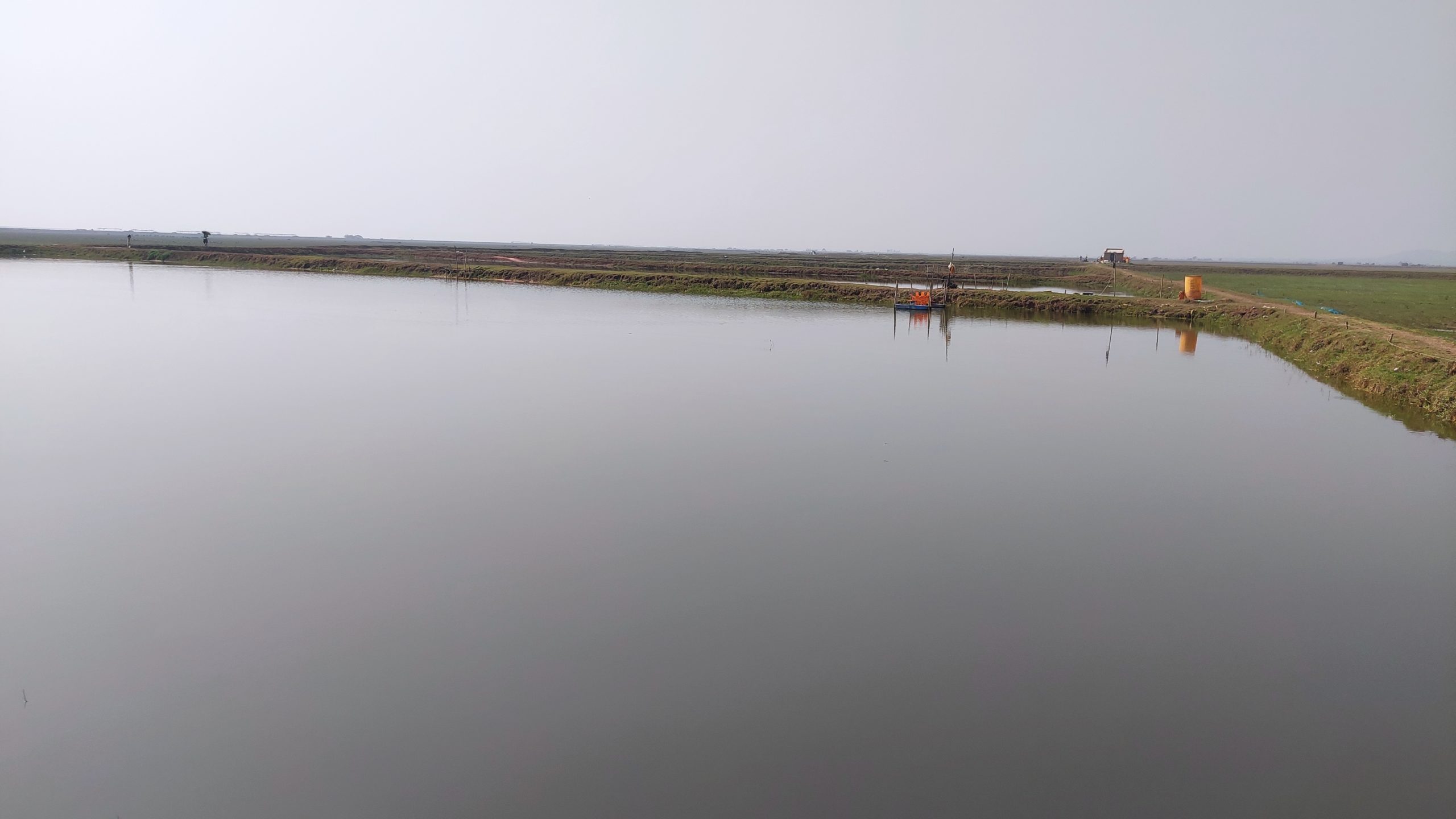Fishing For Profits: Women who have taken up aquaculture as a means of livelihood in Odisha take the help of technology to improve their yield
The farmer-scientist interface initiated by the Central Institute of Freshwater Aquaculture has yielded significant results as nearly 10,000 women in rural Odisha, are practising aquaculture as a sustainable source of income.


Bhubneshwar, Odisha.
Kabita and her husband Banambar Muduli live at Balabhadrapur village in Balianta block, Khurda district in Odisha, 30 kilometres from its state capital Bhubaneswar.
Kabita, who is 35, owns a pond in her village where she does fish farming, while Muduli, who is 42, sells the produce in the nearby market.
According to Kabita, she has benefited greatly from the training she got from scientists of ICAR-CIFA (Indian Council of Agricultural Research and Central Institute of Freshwater Aquaculture). It taught her to take good care of her pond, and keep it clean so that fish do not die.

Women practising aquaculture for livelihood
CIFA, a premier institute in freshwater aquaculture, has helped increase her productivity and enhance her income. “Earlier, the fish used to die because I didn’t know better, and that caused severe losses, but the intervention of the scientists began to improve things four years ago,” she told Gaon Connection. The scientists provided her technical inputs and expertise that translated into better fish, a bigger catch and more income.
“We now annually get around two quintals of fish from the pond that earlier yielded one-and-a-half quintals. The size of the catch has also increased. Each fish now weighs about two-and-a-half to three kilogrammes. Earlier, it would not cross two kilos,” Pushpalata Sahu, also from Balabhadrapur, told Gaon Connection. Kabita and Sahu are beneficiaries of the Farmers First project, launched by ICAR-CIFA in 2016. The project has benefitted around 1,600 families in the past four years.
Under the project, farmers with small holdings, those who were landless, and women, were specially addressed through technology-integrated modules.

“We found that the yield was low because the farmers were not aware about scientific methods that included the correct usage of feed in the pond, the application of agricultural limestone in aquaculture ponds to improve pH and alkalinity, and so on,” HK De, principal scientist, social science section, ICAR-CIFA, told Gaon Connection.
The project aimed to enhance farmer-scientist interface for technology development and application. While the training was on integrated farming, the focus was more on aquaculture. “The women farmers were also trained to change water in the ponds at regular intervals to ensure that fish stay alive and healthy,” said De. The project has so far covered Kantia Talasahi, Kantia uparasahi, Jagannathpur and Dorbanga villages in Khurda district. “Around ten thousand women are supplementing their family income through aquaculture with the help of different projects by CIFA with funding support from the central government,” De added. As the men migrate for livelihood, the women often become the earning members of their families and take to aquaculture in their village ponds, he explained.

Migrant population getting attracted towards aquaculture
Aquaculture as an alternative source of livelihood is catching on. Migrants who have returned to their homes during the lockdown are now looking up to The Aquaculture Field School (AFS) running in the villages of Odisha to help them venture into aquaculture.
Set up for the first time in the country in Odisha in 2009, AFS acts as a learning centre for fish farmers who are trained on broodstock management, nursery and feeding management. They are also trained on disease diagnosis, feed formulation, integrated farming, soil, water analysis and technology on culture practices of more than 25 fish species.
AFS has been running at four places in Odisha in the Baisinga block in Mayurbhanj, Banpur and Sarakana blocks in Khurda and Gop block in Puri, besides at Durg in Chhattisgarh.
Batakrushna Sahoo, who was conferred with the Padma Shri in 2020 for his contribution in the field of Animal Husbandry, says his phone has not stopped buzzing after he was honoured with the civilian award. The 70-year-old who stays at Sarkana village of Khurda’s Balianta block has been running the oldest AFS in Odisha since 2009, “There has been a sudden spike of interest in aquaculture since the COVID-19 lockdown,” Sahoo told Gaon Connection. He has been getting a flood of calls asking for training on aquaculture and about purchase of fingerlings, besides farmer queries on aquaculture, he said.

Concerns of food security
More and more agricultural land is being used for aquaculture, raising concern about how it may impact food security. India ranks 94th among 107 countries in the latest Global Hunger Index (GHI), 2020, trailing behind Nepal, Bangladesh and Pakistan.
“We have no alternative but to minimise paddy cultivation due to lack of adequate irrigation facilities. The rain-fed paddy is grown during monsoon while there is no scope of multiple cropping due to water shortage,” Manoj Sahoo, a 39-year-old farmer from Bhusandpur village in Khurda district of Odisha, told Gaon Connection.
The lack of irrigation facilities for farming coupled with higher returns have been driving farmers towards aquaculture, he said. “Aquaculture can be practised throughout the year with water stored in ponds from the monsoon and also ground water. The return from aquaculture is almost five to six times higher than the paddy,” Sahoo pointed out. Large swathes of paddy land in Tangi block, Khurda district, are already being used for shrimp farming. He added that some farmers earned as much as Rs 50,000 annually through aquaculture, compared to the Rs 20,000 they earned from paddy.
Scientists at ICAR-CIFA, however, also pointed out that food security could not be an issue as climate-resilient farming has helped farmers enhance production, “Farmers are now provided with different varieties of seeds that give higher yield as compared to others. Even consumption patterns are shifting, with people preferring a protein-rich diet of fish and other food items. Aquaculture is now a cash crop,” stated De.

